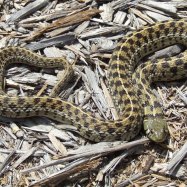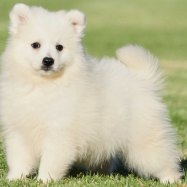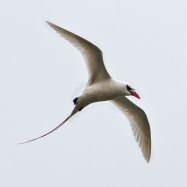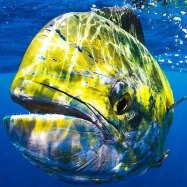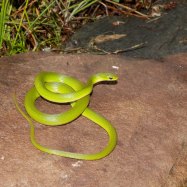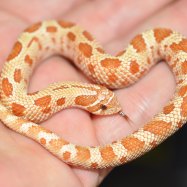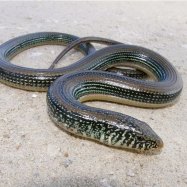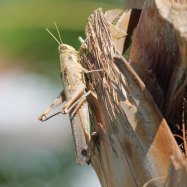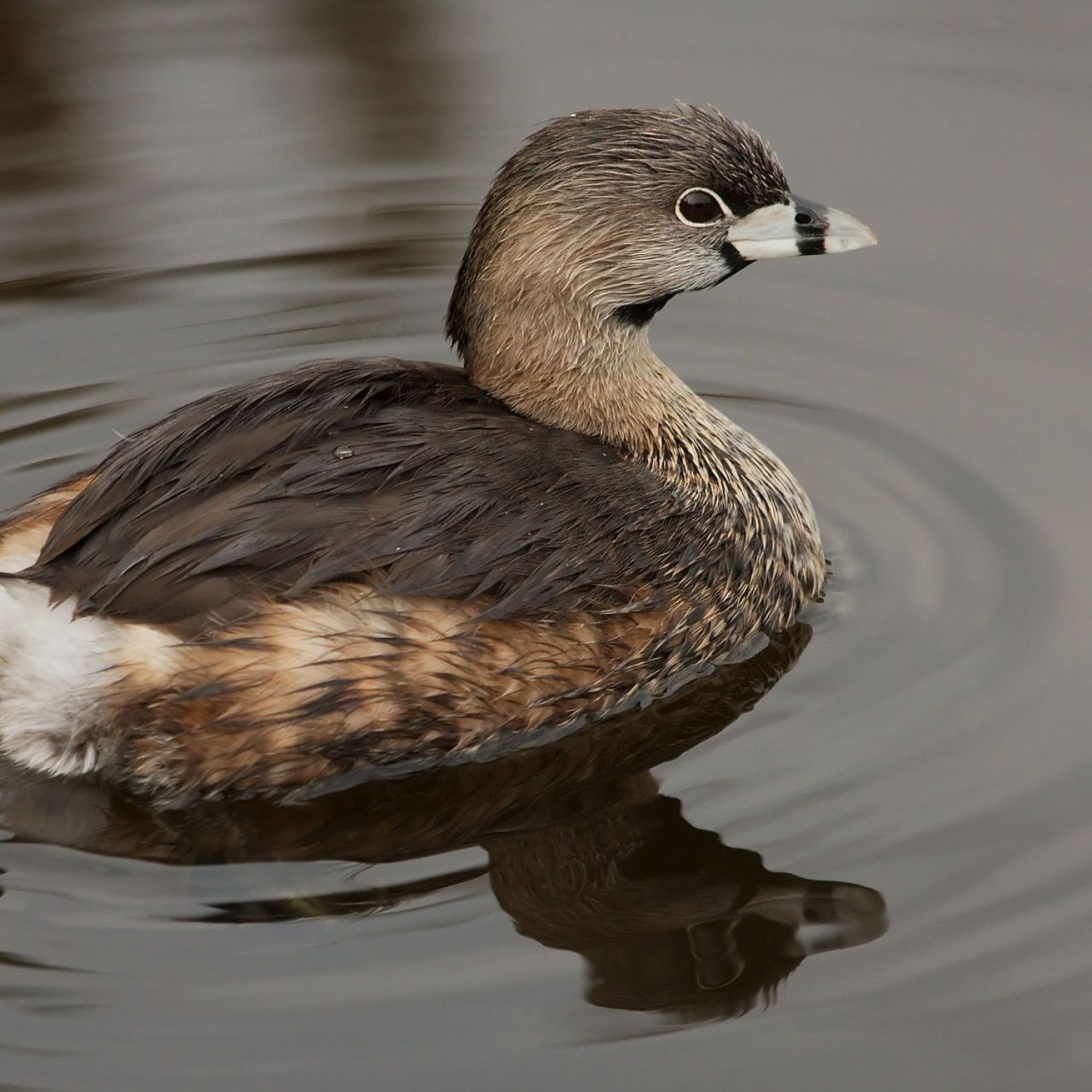
Pied Billed Grebe
Approximately 13-15 inches
Meet the Pied-Billed Grebe, a small but stocky waterbird found in North America. With its short neck and thick bill, this member of the Podicipedidae family is easy to spot. Growing up to 15 inches in length, these birds are highly skilled divers and swimmers, making them a common sight in lakes and marshes. Keep an eye out for this unique and fascinating creature on your next outdoor adventure. #PiedBilledGrebe #NorthAmerica #Waterbirds
Animal Details Summary:
Common Name: Pied-billed Grebe
Kingdom: Animalia
Habitat: Freshwater lakes, ponds, marshes
A Journey with the Enigmatic Pied-billed Grebe: Discovering the Secrets of this Fascinating Aquatic Bird
Imagine yourself strolling along the banks of a tranquil lake, surrounded by lush greenery and the soothing sounds of nature. Suddenly, you spot a small, stocky bird paddling gracefully across the water's surface. Its dark brown body and striking black bill instantly catch your eye, and you can't help but be captivated by its smooth and effortless movements. Curiosity piqued, you draw closer towards the bird, and as you approach, you realize that you are in the presence of a Pied-billed Grebe Pied Billed Grebe.This unassuming bird may not be the most well-known or flashy species, but it is a fascinating creature with a rich ecological history. From its scientific name, Podilymbus podiceps, to its unique body shape and feeding habits, there is so much to discover about this elusive waterfowl. So, let's embark on a journey together to unravel the secrets of the Pied-billed Grebe.
The Classification and Distribution of the Pied-billed Grebe
As with all living beings, the Pied-billed Grebe has a scientific name derived from Latin. Its specific name is "Podilymbus podiceps," where "podilymbus" translates to "foot diver" and "podiceps" means "rear-footed." These names aptly describe the bird's behavior of diving underwater with its feet positioned at the back of its body. This species also has a common name, "Pied-billed Grebe," possibly derived from its distinctive black bill.The Pied-billed Grebe belongs to the kingdom Animalia, the phylum Chordata, and the class Aves, which means it is an animal with a spinal cord and classified as a bird. However, its order Podicipediformes and family Podicipedidae set it apart from other bird species Polka Dot Stingray. The Podicipediformes order contains only one family, Podicipedidae, commonly known as "grebes." The family comprises 22 species of aquatic birds, including the Pied-billed Grebe, making it the most diverse group of diving birds.
The Pied-billed Grebe has a wide geographical distribution, inhabiting regions across both North and South America. It can be found in countries like the United States, Canada, and Mexico, making it a common sight in various bodies of water in North America. In South America, it can be spotted in countries like Brazil, Argentina, and Chile.
The Habitat of the Pied-billed Grebe
As a semi-aquatic bird, the Pied-billed Grebe depends heavily on freshwater for its survival. It is most commonly found in lakes, ponds, and marshes, where it can dive and swim with ease. These birds prefer to inhabit shallow, clear waters with plenty of vegetation, as it provides cover and serves as a food source. They also tend to avoid areas with strong currents or open waters, as it makes it harder for them to maneuver.The Pied-billed Grebe is a migratory species, and its habitat may vary throughout the year. In the summer, when breeding season begins, it can be found in the northern parts of its geographical range. But, as winter approaches, it migrates to warmer areas in the south, where it can continue accessing food and suitable nesting grounds.
The Physical Characteristics of the Pied-billed Grebe
At first glance, the Pied-billed Grebe may not seem like an exceptional bird. However, upon closer inspection, one can notice its unique features that set it apart from other species. This bird has a small, stocky body, measuring approximately 13-15 inches in length and weighing around 7 ounces. Its body shape is adapted for aquatic life, with a short neck, a rounded head, and a thick, powerful bill.One of the most distinctive features of the Pied-billed Grebe is its bill, which is non-retractable and can be used as a tool for catching prey. Its bill is black and has a unique groove running down its middle, making it look like a pied bill, hence the name "Pied-billed" Grebe. This feature is especially useful for the bird in winter when its diet changes to include larger prey, like fish and small crustaceans.
The Pied-billed Grebe's body is predominantly dark brown, with a rich, glossy shine. However, it is not uniformly colored, as the bird's belly is a striking white, creating a stark contrast. This coloration serves as a form of camouflage, blending in with the sun's reflection on the water, making it harder for predators to spot the bird from below.
The Behavior and Feeding Habits of the Pied-billed Grebe
As mentioned earlier, the Pied-billed Grebe is a semi-aquatic bird, which means it spends a significant amount of time in the water. It is a remarkably adept swimmer, using its feet to paddle through the water, and can dive underwater for up to 30 seconds. Its rear feet are also specially adapted for swimming, with lobed toes that act as paddles, allowing it to navigate through the water with ease.But what does the Pied-billed Grebe do in the water? Well, it feeds. Being a carnivorous bird, its diet primarily consists of small fish, insects, crustaceans, and other aquatic invertebrates. Insects are its preferred choice of meal, and it is not uncommon to see a Grebe foraging on the surface of the water, picking at insects or other small creatures. During the winter, when insects are scarce, it turns to more substantial, protein-rich meals, like small fish.
Apart from its feeding habits, the Pied-billed Grebe is known for its unique mating ritual, often described as "dancing." During breeding season, males and females engage in elaborate courtship displays, including head-bobbing, water-splashing, and even simultaneous diving. This behavior helps them bond with a mate and establish the boundaries of their nesting territory.
The Role of the Pied-billed Grebe in the Ecosystem
The Pied-billed Grebe may not be a top predator or a keystone species, but it still plays a vital role in its ecosystem. As a semi-aquatic bird, it feeds on a variety of prey, controlling their populations and maintaining ecological balance. In addition, their presence in wetlands and lakes is a sign of a healthy aquatic environment, as they are sensitive to pollution and habitat degradation.Moreover, the Pied-billed Grebe is an indicator species, meaning its population and behavior can provide valuable information about the health of its habitat. Research has shown that changes in water quality or pollutants can significantly impact its population size and breeding success, making it an essential species to monitor in aquatic environments.
The Conservation Status and Threats to the Pied-billed Grebe
Unfortunately, despite being an important species in the ecosystem, the Pied-billed Grebe faces several threats to its survival. Its population size has declined in recent years, and it is currently listed as a species of least concern on the International Union for Conservation of Nature's (IUCN) Red List of Threatened Species.One of the significant threats to the Pied-billed Grebe is habitat loss and degradation. Wetland destruction, water pollution, and invasive species have significantly impacted the bird's breeding and foraging habitat, making it difficult for them to find suitable places to nest and food to sustain themselves.
Accidental entanglement in fishing nets and collisions with man-made structures like power lines and wind turbines are also significant causes of mortality for the Pied-billed Grebe. These birds are also hunted and consumed by humans in some parts of their range, impacting their population size.
However, conservation efforts have been put in place to protect the Pied-billed Grebe and its habitat. Measures such as habitat restoration, wetland protection, and monitoring of their populations have been implemented to safeguard this species and ensure its survival for future generations.
Conclusion
In conclusion, the Pied-billed Grebe may not be the most well-known or showy species, but it is a fascinating creature with a rich ecological significance. From its unique body shape and behavior to its vital role in maintaining the health of wetland ecosystems, this bird has so much to offer.As we have learned, the Pied-billed Grebe is a semi-aquatic bird that relies on freshwater for its survival. It has a distinct physical appearance and feeding habits, making it well-adapted to its aquatic lifestyle. However, it also faces several threats to its survival, highlighting the importance of conservation efforts to protect this enigmatic bird.
The next time you spot a Pied-billed Grebe while on a nature walk or by the lake, take a moment to appreciate its beauty and significance. As we continue to strive towards conservation and preservation of our natural world, let us not forget these lesser-known but equally essential species that make up our diverse and intricate ecosystem.

Pied Billed Grebe
Animal Details Pied Billed Grebe - Scientific Name: Podilymbus podiceps
- Category: Animals P
- Scientific Name: Podilymbus podiceps
- Common Name: Pied-billed Grebe
- Kingdom: Animalia
- Phylum: Chordata
- Class: Aves
- Order: Podicipediformes
- Family: Podicipedidae
- Habitat: Freshwater lakes, ponds, marshes
- Feeding Method: Carnivorous
- Geographical Distribution: North and South America
- Country of Origin: United States, Canada, Mexico
- Location: North America
- Animal Coloration: Dark brown body, white belly, black bill
- Body Shape: Small, stocky body with a short neck and a thick bill
- Length: Approximately 13-15 inches
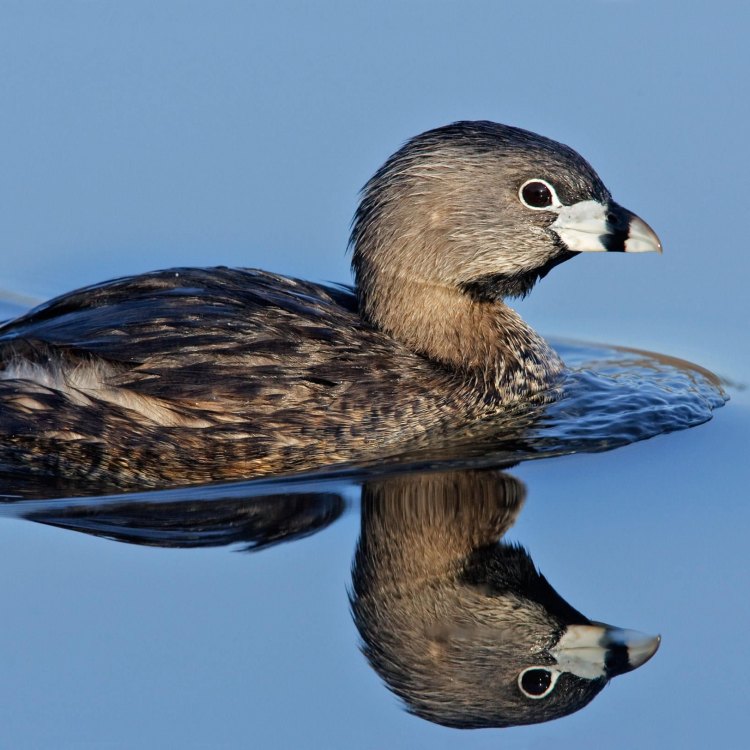
Pied-billed Grebe
- Adult Size: Small to medium-sized
- Average Lifespan: 3-5 years
- Reproduction: Monoestrous
- Reproductive Behavior: Seasonal pair bonding, nest-building
- Sound or Call: Loud, descending, repeated call
- Migration Pattern: Some populations migrate, others are resident
- Social Groups: Solitary or in small groups
- Behavior: Dives underwater to catch prey, can swim underwater for 30 seconds or more
- Threats: Habitat loss, pollution, predation
- Conservation Status: Least Concern
- Impact on Ecosystem: Acts as a prey species, helps control aquatic invertebrate populations
- Human Use: Hunting, birdwatching
- Distinctive Features: Pied bill, dark body with pale belly
- Interesting Facts: Can sink its body low in the water to hide from predators
- Predator: Bigger birds of prey, snakes, and turtles
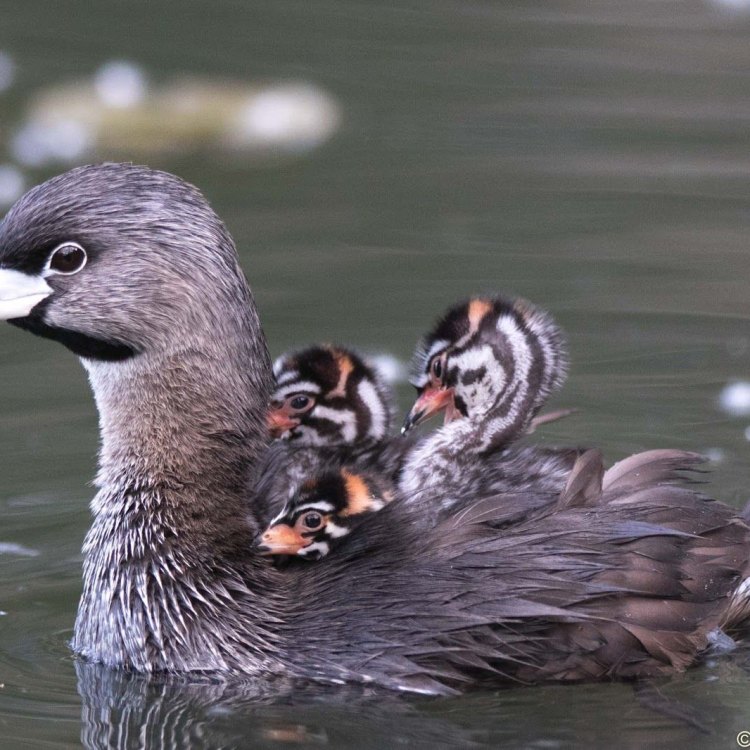
Podilymbus podiceps
The Unique Features of the Pied Billed Grebe: Surviving and Thriving in Aquatic Habitats
The Pied Billed Grebe is a small to medium-sized waterbird that can be found across North and South America. It is known for its distinctive appearance, with a dark body and a unique pied bill that gives it its name. Despite its size, this bird possesses some incredible features that allow it to survive and thrive in its aquatic habitat. From its reproductive behavior to its hunting techniques, the Pied Billed Grebe is truly an interesting and adaptable species PeaceOfAnimals.Com.But before we dive into its unique characteristics, let us first explore some general information about this fascinating bird.
Size and Lifespan
The Pied Billed Grebe may be small, but it is mighty. It can range in size from 9-15 inches and can weigh anywhere from 7-20 ounces. Its compact size makes it easy to maneuver through dense aquatic vegetation and dive underwater in search of food.As for its lifespan, the average lifespan of a Pied Billed Grebe is 3-5 years. However, some individuals have been known to live up to 10 years in captivity. In the wild, their lifespan is often shortened due to various threats and predators, which we will explore later on.
Reproduction
The Pied Billed Grebe is a monoestrous species, meaning it only breeds once a year. This usually occurs in the spring or summer, depending on the geographic location Painted Bunting. During this time, the birds engage in seasonal pair bonding, where they form a monogamous pair for the breeding season. They remain together until the young are independent, and then each bird will find a new mate the following year.Reproductive Behavior
One of the most intriguing aspects of the Pied Billed Grebe's reproductive behavior is its nest-building process. Unlike other bird species that build their nests in trees or on the ground, the Pied Billed Grebe builds its nest on floating vegetation or in the shallow waters of its habitat. This nest-building process involves the male and female grebes diving underwater, bringing back vegetation to form a floating platform, and then adding more materials on top to create a more secure structure. This unique behavior allows the grebes to protect their nests from predators that may live in the surrounding land and also provides shelter from strong currents.Sound or Call
If you happen to be near a body of water where the Pied Billed Grebe resides, you may hear its distinctive call. Described as a loud, descending, and repeated call, the grebe uses this sound to attract mates and communicate with members of its species. Its call can be heard at dawn and dusk, as well as during courtship and territorial displays.Migration Pattern
Interestingly, the Pied Billed Grebe has a diverse migration pattern. While some populations migrate, others are resident, meaning they stay in one location year-round. The migrations usually take place in the fall and spring when the birds move to warmer or more temperate climates. This behavior helps them to find suitable breeding and feeding grounds and avoid harsh winter conditions.Social Groups
Pied Billed Grebes are primarily solitary birds, but they may also be found in small groups. These social groups consist of mated pairs, juveniles, and non-breeding adults. During the breeding season, the mated pairs are the most social, while non-breeding adults may interact more outside of the breeding season.Behavior
The Pied Billed Grebe is well adapted to its aquatic habitat and has unique behaviors that allow it to thrive. One of its most impressive behaviors is its diving ability. The grebe is capable of diving underwater to catch prey and can stay submerged for up to 30 seconds. It also has the ability to swim underwater, using its wings as flippers to propel itself through the water. This allows the grebe to hunt for a variety of fish, crustaceans, and insects, which make up its diet.Threats
Like many other species, the Pied Billed Grebe is facing several threats that put its survival at risk. Habitat loss is a significant threat to this bird due to the destruction of wetlands and other aquatic habitats for human development. Pollution and contamination of water sources also pose a threat to their survival, as they rely on clean water for hunting and nesting. Additionally, the grebe's small size makes it vulnerable to predation by larger birds of prey, snakes, and turtles.Conservation Status
Despite these threats, the Pied Billed Grebe is currently listed as "Least Concern" on the IUCN Red List of Threatened Species. This is due to its widespread distribution and stable population. However, continued conservation efforts are necessary to ensure the survival of this species, especially in regions where their populations are declining due to habitat loss and pollution.Impact on Ecosystem
While the Pied Billed Grebe may seem like a small and insignificant bird, it plays a crucial role in its ecosystem. As a prey species, the grebe helps to control aquatic invertebrate populations, which can have a significant impact on water quality. They also serve as indicators of ecosystem health, as their presence or absence can signal changes in the environment. Thus, the grebe's survival is not only essential for its species but also for the health of its surrounding habitat.Human Use
The Pied Billed Grebe has a long history of interaction with humans, both as a useful resource and for recreational purposes. In the past, it was hunted for its meat, feathers, and eggs. However, now hunting regulations are in place to ensure the sustainability of its populations. On the other hand, the grebe has become a popular species for bird watching, with its unique appearance and behaviors making it a favorite among birders.Distinctive Features
The Pied Billed Grebe has several unique features that make it easily distinguishable from other bird species. Its most distinctive feature is its pied bill, which gives the bird its name. The bill has a black band towards the tip, making it appear as though the bird has a black ring around its bill. It also has a dark body with a pale belly, making it easier to camouflage in the water. This plumage also helps the bird to regulate its body temperature in the water, allowing it to stay warm while diving for extended periods.Interesting Facts
Apart from its distinct features and behaviors, the Pied Billed Grebe has some interesting facts that make it even more remarkable. One of these is its ability to sink its body low in the water, leaving only its head above the surface. This behavior allows the bird to hide from predators and sneak up on prey, making it an efficient hunter.Predators
As mentioned earlier, the Pied Billed Grebe faces threats from predators such as large birds of prey, snakes, and turtles. These predators often target the grebe's eggs and young, making it important for the birds to build their nests in areas where they can better protect their young from these threats.The Resilience of the Pied Billed Grebe
In summary, the Pied Billed Grebe may be a small and unassuming bird, but it possesses remarkable adaptations and behaviors that allow it to survive and thrive in its aquatic habitat. From its unique nesting habits to its impressive diving ability, the grebe has shown resilience in the face of various threats and continues to play a crucial role in its ecosystem. Whether you are a bird lover, a nature enthusiast, or just curious about the diversity of our planet, the Pied Billed Grebe is a species worth learning more about and protecting for future generations to enjoy.
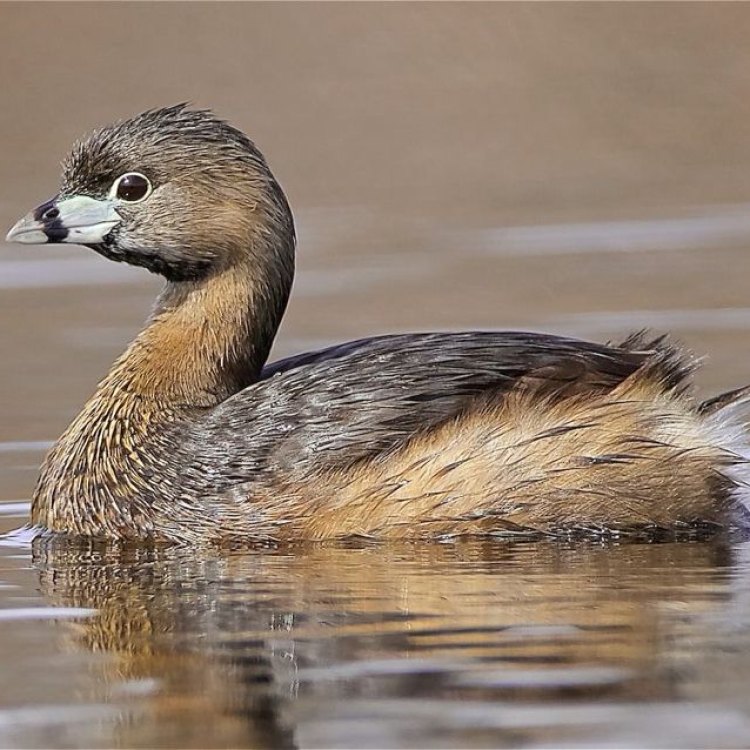
A Journey with the Enigmatic Pied-billed Grebe: Discovering the Secrets of this Fascinating Aquatic Bird
Disclaimer: The content provided is for informational purposes only. We cannot guarantee the accuracy of the information on this page 100%. All information provided here may change without prior notice.

